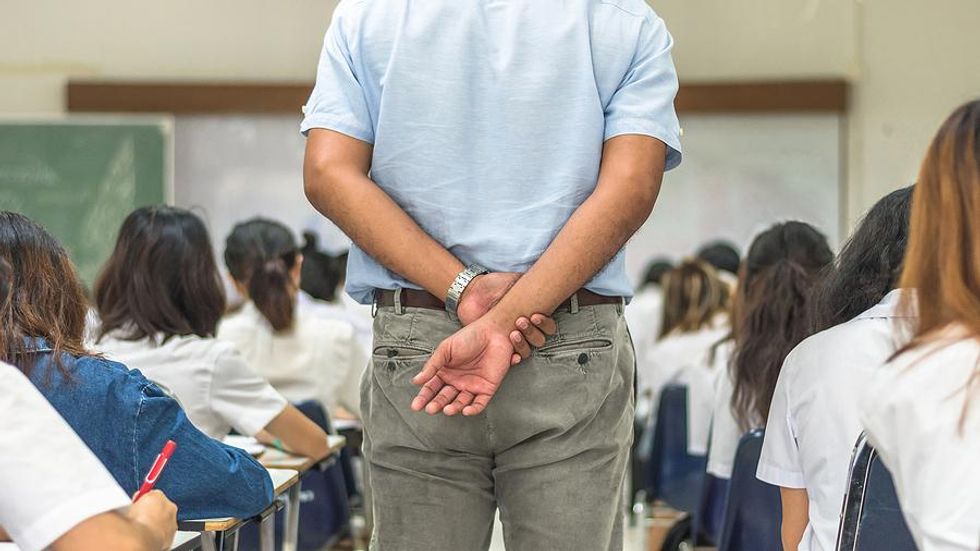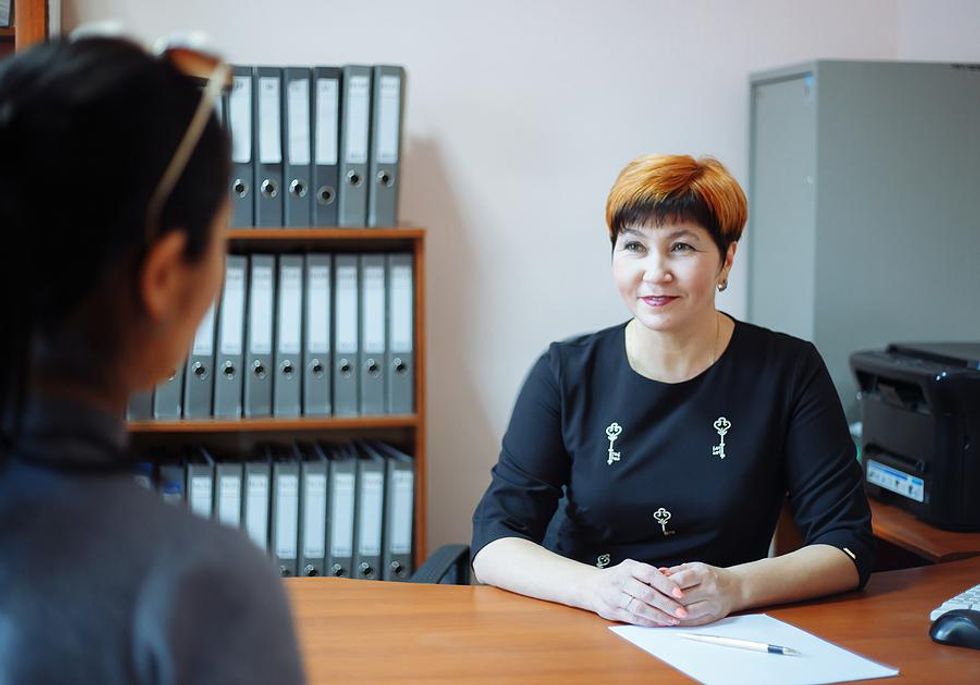
I have been coaching for more than a few years now and I hate to say it: this has been one of my more challenging years. In facilitating in-person whole staff training, for example, I have noticed more than a few teachers sleeping in the back of the room, coming late to training and continuing to engage in telephone conversations as they enter, refusing to collaborate/work with each other, and not engaging in conversation even when prompted by me or their teaching peers. Others have giggled and laughed while watching TikTok videos as their peers were trying to speak. Video trainings have been even worse with teachers turning off both their microphones and cameras and then walking away from the computer. I know because participants are not responding to prompts or going into assigned breakout rooms.
However, I do get it. Teachers are simply overwhelmed and, increasingly, are feeling like their needs are not being met and that they are not valued as professionals. Indeed, according to a recent Challenge Success survey, only 65% of teachers reported being involved in making schoolwide decisions. The after-school trainings that I mention above may also be the only time when teachers have had the chance to chat with their colleagues all day or even week.
Here are five specific reasons why some teachers still are behaving badly, even as the pandemic ebbs, and what we might do to return positivity to our school buildings:
Staff Retention Issues

Bigstock
Forty-four percent of teachers leave the occupation within their first five years (NSBA). Additionally, a poll recently conducted by GBAO strategies—a democratic polling firm commissioned by the NEA—has found that 55% of all teachers, administrators, and other staff are now considering leaving the education field sooner than planned due to the increased stress brought on by COVID-19.
In my recent WID article, "3 Reasons for the Big Quit in Teaching," I discuss, specifically, the negative impact that increased teacher expectations, political discord, teacher pay, and the combination of all these factors is continuing to have on teacher retention post-COVID-19. Indeed, when staff leaves, teachers left behind must pick up even more duties thereby only perpetuating the cycle of burnout. As discussed by me and many others, schools can do more in providing mentorship support to new teachers and invest in third-party one-on-one coaching for all teachers regardless of their time in the profession. What is encouraging is that many states, regardless of political bent, are indeed using ESSER III funding for teacher training and support so that teachers stay in school.
Less Experienced Staff

Bigstock
Today, on average, a teacher has 1-3 years of classroom experience compared to 15 years of experience 30 years ago. In addition, less than half of new teachers are over 29 years of age and just 19% are older than 40 (NSBA). To address teaching staff shortfalls, many states also are lowering the requirements to get into the teaching profession. Teachers in Arizona, for instance, can now teach with only a high school diploma if they are at least enrolled in college. Eleven other states also are considering lowering entry standards. New Jersey has not only removed testing requirements but also has developed a pilot program for teachers entering with low GPAs.
What does this mean? This means that some teachers may not have "yet" developed the professional maturity to successfully navigate the everyday challenges and expectations of teaching. While only requiring a high school diploma to teach may be a debatable policy, it is, at least, encouraging that Arizona does require teachers with only a high school diploma to be concurrently enrolled in college. Should we wish to draw upon new teacher talent sources that are not, perhaps, prepared to teach in a traditional sense, it will be important that K-12 school administration partners with higher education in training teaching staff not only on the college campus but also embedded at the teacher's assigned school. We also should continue to explore teacher micro-credentialing programs; as teachers earn micro credits, they can be given increasing amounts of teaching responsibility without waiting for a degree in its entirety.
Stress Related To Disrupted Learning (And Testing)

Bigstock
Let's face it. To varying degrees, teachers are held accountable for how well students do on end-of-year state exams as well as on other student achievement benchmarks. However, just because we are once again testing, this does not mean that students have mastered the content/skills on which they are being tested. Studies do show, in fact, that students learned less during remote pandemic learning and are now playing catch-up. Teachers are therefore helping more students individually to catch up while also trying to move their classes forward in meeting grade-level standards. This just adds stress to an already stressful time for teachers. At least states are using ESSER III funds to support tutoring programs. Still, while we could be using the pandemic as an opportunity to consider less "high stakes" and other authentic “low stake” approaches to assessment, I do not currently see many states moving in this direction.
Decreased Administrative Support

Bigstock
There are a host of reasons why teachers may not feel supported by administrators; these reasons can range from feeling micro-managed to having large class sizes, to leaders not ensuring appropriate student behavior—such as having a consistent student cell phone use policy for one—and/or a safe campus environment. In an anecdotal LinkedIn poll I recently conducted, a whopping 91% of participating educators stated that they had never been asked by their supervisors what their priorities were for the week and if the supervisor could help. Wow! While this survey was informal, it is still telling. Further, supervisors can’t support staff if they don’t exist. Even prior to COVID-19, research indicated that one out of every two principals is not retained after their third year of leading a school. COVID-19 has only exacerbated the demands placed upon school leaders.
As with teachers, if we must continue to bring in less well-qualified school leaders, we must develop micro-credentialing opportunities so that school leaders can gain exposure to core concepts within school administration as well as consider how schools might partner with leadership development organizations—institutions such as New Visions for Public Schools, the Center for Educational Innovation, and/or Fordham University’s GSE Office of External Partnerships, each of which offers leadership coaching around systemic school improvement, strategic planning, and communication/outreach. For instance, CEI is drawing upon the organizational improvement work of Anthony S. Bryk and the Carnegie Foundation for the Advancement of Teaching. At Fordham, where I also consult, I have had the fortune to facilitate the growth of teacher leadership teams that provide peer support alongside that of administration using the equity framework of Dr. Gholdy Muhammad.
Decrease In Positive School Climate

Bigstock
Just read some of these sobering statistics provided by the School Culture and Climate Initiative:
- More than 1 in 3 high school students had experienced persistent feelings of sadness or hopelessness in 2019, a 40% increase since 2009.
- In 2019, approximately 1 in 6 youth reported making a suicide plan in the past year, a 44% increase since 2009.
- More than 66% of youth in the United States experience a traumatic event or circumstances by 16 years of age and many children experience chronic trauma.
While most districts did have a school counselor in the 2020-21 school year, only 14% met the ratio of one school counselor to 250 students as recommended by the American School Counselor Association. New issues, connected to COVID-19, also are bubbling up. Nearly half of school and district leaders said in an Education Week survey that their school or district is getting more threats of violence by students than in the fall of 2019. Two out of three teachers, principals, and district leaders also say students are misbehaving more now than they did before the pandemic.
As a result, schools need to become more creative in recruiting counselors from outside traditional school settings and explore virtual support. Additionally, one way to give staff a break and to potentially improve overall school/life balance might be to move to a four-day work week; however, a four-day schedule is not without its challenges. Still, other schools are increasing teacher training in SEL practices with yet others prioritizing restorative justice practices over that of traditional discipline measures.
If you would like additional ideas on how to impact student lives without sacrificing your own, and have a life teaching, check out my quick hack teaching courses here. You can also reach me on LinkedIn.
- 5 Planning Tools For Mastering The Curve Balls Of Teaching - Work ... ›
- What Teachers Should Know Before Interviewing With Schools ... ›
- 5 Common Teaching Mistakes That Stunt Student Growth - Work It ... ›
- 7 Best Summer Jobs For Teachers - Work It Daily ›
- How To Answer The Top 5 Interview Questions For Teachers - Work ... ›
- 6 Things To Know Before Becoming A Teacher - Work It Daily ›
- How To Address Teacher Shortages In The U.S (And Beyond) - Work It Daily ›
- How And Why All Teachers Must Teach Vocabulary - Work It Daily ›
- The Best Jobs For Teachers Leaving Education - Work It Daily ›

 Bigstock
Bigstock Bigstock
Bigstock Bigstock
Bigstock


